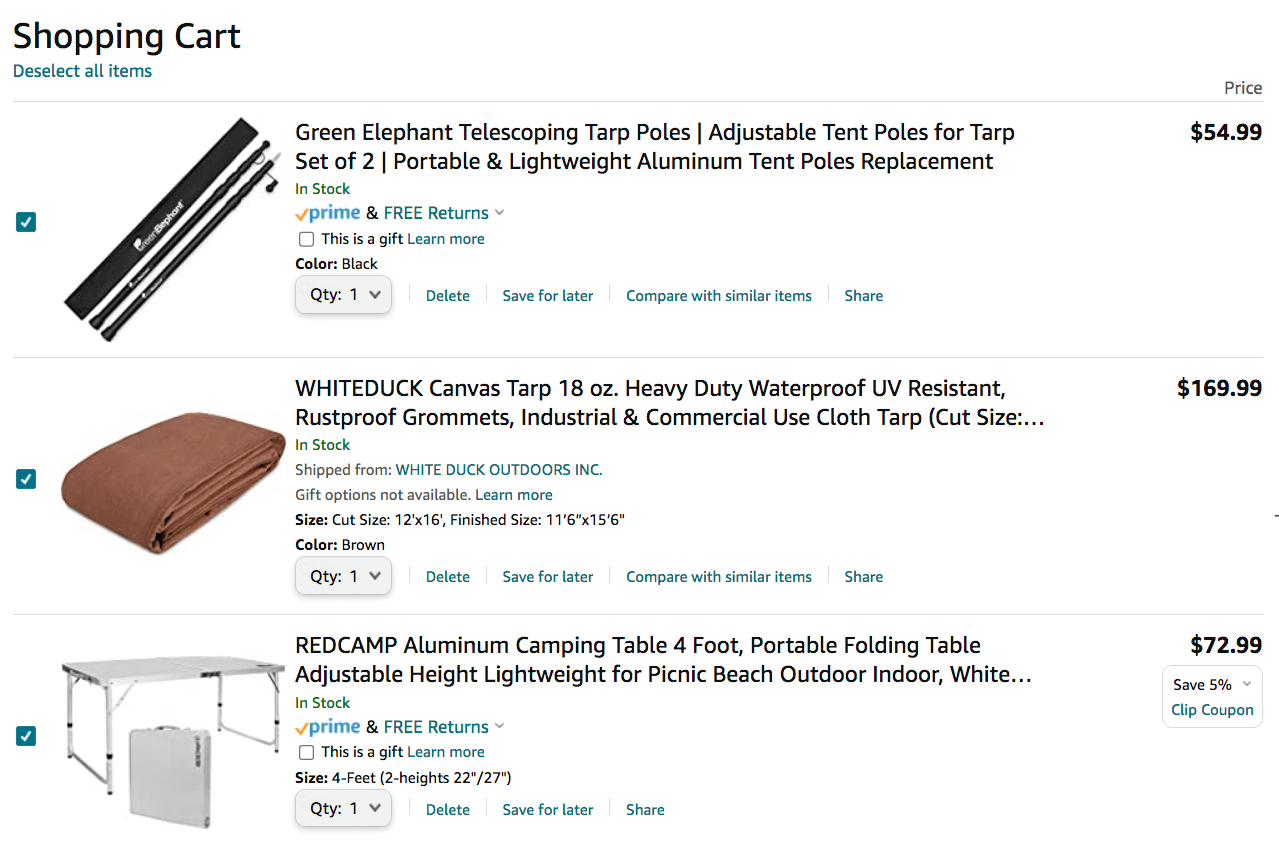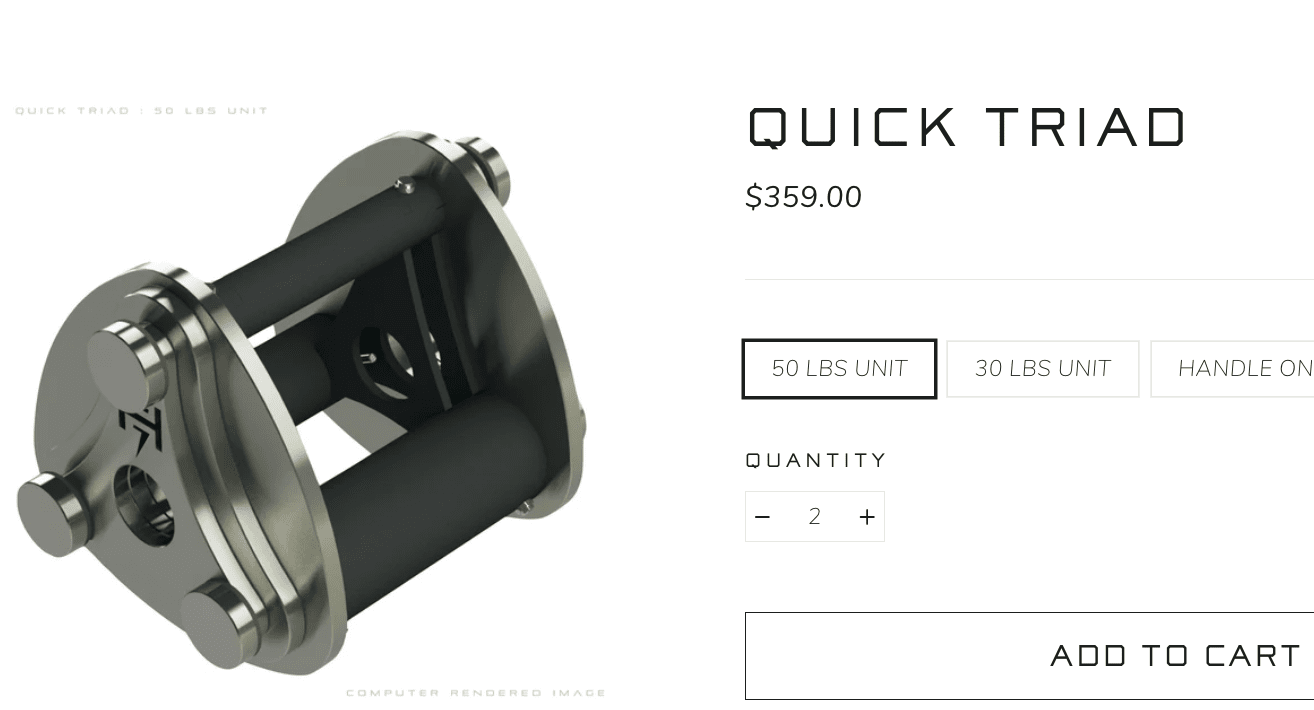The Necessities to Add to a Can or Camper to Stay in Dispersed Camping and Small Towns
Executive Summary
- To engage in dispersed camping and or staying in small towns, I have a list of things I would need to add to the van.
- This article covers those items and gets into precisely what I would buy.
Introduction
I think there are three things I need to take advantage of dispersed camping.
- A composting toilet. The composting toilet is more complex than anything else in this article, so it is a separate article (How to Build a Composting Toilet). With a composting toilet, one can stay in places with less infrastructure, opening up more locations.
- A tent or similar, as well as a table, so that I can work on my computer outside the van and use weights with privacy.
- Exercise equipment and weights that can fit in a van.
Tent or Similar
At first, I thought of a tent, but the more I looked into it, it seemed a tarp might be better.
This video does an excellent job of showing how flexible tarps can be.
A van is already a very stable structure. Using a tarp allows one to connect the tarp to the van. I have a rack on top of the van, enabling easy fastening. This is both a fast and low-cost option. The tent posts could be situated so that the tarp would slop down to perhaps 2 feet, which would obstruct the view and allow for a standing area under the tarp, as the tarp is beginning from a height of around 8 feet — tied to the rack.
Add a pop-up table and telescoping tent posts; the total is around $300.
Here are the items at Amazon.

This is a canvas tarp. Most tarps are made of plastic and make a lot of noise when blown by the wind. Everything I hear is canvas is preferable for tents as long as weight is not an issue. Nylon has bad thermal properties, but it is best when you have to carry a tent or tarp. Canvas tarps are much more expensive than plastic tarps, but neither are that expensive.
Uses for the tarp/van tent.
- For doing computer work on a table underneath the tarp/van tent — running an extension cord to a power strip outside the van.
- For working out. A 12 by 16-foot tarp would allow plenty of space to exercise, and I may have to hang another tarp off of the side of the tarp that comes off the van to get more privacy.
- For taking “pseudo showers,” a type of sponge with a basin or combined with the use of wipes. This type of pseudo shower works excellently when you can stand unencumbered. Another thing is you tend to get water bouncing off of you, and it’s more of a problem inside of a van — but under a tarp, it would be much more pleasant and easy to get clean. I could buy biodegradable soap. All I have to do is let the water run off of me and pour out the liquid from a basin, which will fall to the ground and then dry without harming the environment. I am speaking of doing this at a campground where the land is dirt, not in the Home Depot parking lot.

Using Campsuds, one can wash anything out onto the land, which will be broken down naturally. This means you don’t have to worry about the water that runs off your body. That is, the land itself is your “drain.”
These are just the basics I see as necessary to do dispersed camping. This is small potatoes compare to the much higher expense of getting gym equipment for the van.
However, I still have a restriction because I don’t have a gym I can use, which will drive me to a place with a significant population.
Setting up a Van Gym
Another issue I have found that pulls me into population density is gyms. Now that I bike so much, I don’t need any of the aerobic equipment in the gym. But I do still need the weights.
Another thing I get from a gym is a shower, but I have taken care of that with the van tarp/tent, reducing part of the need for a gym.
This video compares adjustable dumbells.
With adjustable dumbells, one can do many exercises, including lower body exercises with the dumbells held at one’s sides while the leg movement is performed.
This dumbbell caught my eye. At first, I did not think it was a handle at all but some type of cable attachment.
The Havak Dumbbell
This innovative dumbbell allows it to weigh different amounts based on how it is held.

This dumbbell is expensive, at around $360 per unit. And some additional weight to better allow for use with legs would run another $200, bringing the total to around $900.
That is quite a lot for adjustable dumbells.
The Reason I Find These Strange Dumbbells Appealing
The less expensive adjustable dumbells I have used get loose at the collars. Several expensive dumbells have more positive attachments, but no other dumbbell that is as flexible as this one.
Here is why I think these dumbbells are the best option for me.
- I think I can do much more with these dumbbells than with traditional ones.
- This dumbbell keeps the weight at the center or in line with the hand, while with traditional dumbbells, the weight is fore and aft of the hands, making it less stable. If I think of one of the reasons I like cables, it is because the weight is kept in line with the motion of the hand. That allows for a smoother and more pleasant motion, meaning you want to do it more.
- These dumbbells could be used in several dynamic motions and have an even better weight distribution than a kettlebell. Kettlebells weight line with the motion of the hand, but the weight is always on the bottom. Even using a kettlebell for a curl motion feels weird, and you never see people using kettlebells for curling. Some people (kettlebells, while widely known, are not really that widely used) use kettlebells for upper body motions, but I never liked it. The kettlebell moves strangely when you start doing large sweeping movements with it. I like using the kettlebell but only for a few motions that are more centered on the lower body than the upper body. (I also already own one 70 LB kettlebell that I can add to the van or tent gym).
- These dumbbells would also be very easy to store in the van. In fact, of the different options I have looked at, these are probably the best for van storage. I could see putting them on the back shelf of the van, which would get them out of the way.
How About a Bench?
When it comes to something like a bench, I can’t fit any of the benches that I reviewed in the van without giving up space I don’t want to sacrifice.
My best option would be to build a bench, which I see is a very simple design, and it would be a bench with no legs for easy storage.
- Step 1: cut/build a relatively slim section of two-by-one reinforced board.
- Step 2: Add a layer of rubber to one side to soften it a bit.
- Step 3: Add a grippy surface on the other side, so it will not slide around when placed on the lip of the van frame.
- Usage: I would lean this bench against the van’s side door frame. This is around a foot and one-quarter off of the ground. The angle can be adjusted by how far the board is against the frame.
What About a Flat Bench?
I always use a bench in an inclined position in any case, regardless of whether my back is on it or I am putting a knee on it. Therefore I have no need for a flat bench. I prefer chest exercises from a slight incline as it is more comfortable than being completely flat.
Such a flat board type bench could be stored in an upright position behind my driver’s seat. I know such a thing would fit because I store flattened cardboard boxes behind there sometimes.
Relative Cost Comparisons
However, lets us take an example. Let’s say I needed to drive to Blyth to use a gym twice weekly. Quartzsite to Blyth is 20 miles round trip, which is 40 miles per week. Let’s say I stayed for four months in Quartzsite. that would be roughly 16 * 40 or 640 miles for that winter. 640/14 miles * $4 per gallon = $182.
- Usually, the wear and tear on a car is at least 2x the cost of gas — so a winter in Quartzite where I used a gym would be roughly $400 in auto expenses.
- And other places I would stay, the gym could be even further away.
- Also, to belong to that gym for four months, I would pay around $200. So that would come to $600 in total. That is already close to 1/2 of what I would spend on the above purchases.
I had no idea my use of the gym was so expensive!
Without a gym in the van, I incur costs in multiple other ways — and one has to also add on time spent driving back and forth as a type of expense. That is time I could use for other things.
This means I can afford pricey gym equipment for the van if it does not take up much space. I could buy a full squat rack, a high-quality Olympic bar with weights, and a bench for 1550 dollars — however, I would need a trailer to move this mini gym around.
And there is another issue related to costs; the cost of the gym I listed above is if you can be in the location for an entire month.
For example, I paid $54 for a monthly gym in Bayfield.
However, if you want to stay in one location for months, you can get a decent rate on a gym, but if you’re going to pop in for a week or just a few days, now you end up on a daily or weekly rate — which is very expensive. Even the normal rate of $50 per month for gyms not part of some huge chain like Planet Fitness (PF’s model is to sign up people who don’t go very often, so it’s not reflective of what gyms cost to join) is $600 per year. Once you come in and pay $10 for a day, that is, for me $35 per week.
The Negative Social Experience from Gyms
I don’t like most people I run into in gyms.
So, going to the gym is negative from the perspective of the people you see and have to share the equipment with.
The perfect number of people in a gym for me is always zero.
Total Costs of the Proposed Items So Far
- $900 for adjustable “weirdo” dumbells
- $300 for the tarp, table, and poles.
- $150 for the material — plus the time to create a simple composting toilet and a flat bench. (I would probably make both the bench and composting toilet from the same piece of plywood)
Therefore, I would project around $1350 in expenses to make the van suitable for dispersed camping and for me to stay in very small towns.
The Cost and Time Savings The Purchases Allow
However, this expenditure would allow for several cost savings and time savings. This includes the savings in gas and gym memberships and the time and savings of less driving. That does not account for my extra latitude in staying in more locations.
This is addressed further in more detail in this article.
Are All Larger Towns Off the Menu?
This does not mean I would never go to a town that is larger, but it would give me the option and ability to stay in both much smaller towns (even smaller than Bayfield) and also on dispersed camping land.
I am increasingly attracted to less populated areas and using larger towns and cities only for their shopping. This explains my interest in dispersed camping, which I cover in the article Recording Information and Logic for Areas to Look for Land and Dispersed Camping.
Furthermore, all of these items…
- Dumbbells and Kettlebell
- Tarp and Tarp Poles
- Homemade Composting Toilet
- Homemade Bench
- Folding Table
..would comfortably fit in the van.
How the Need for Gyms Limits Time Spent in Smaller Towns
I was in one city called Mancos, Colorado, where I wanted to stay longer. However, I did not like the gym they had in Mancos, so I left early when I could have spent at least another week there.
There are a lot of small towns I would like to stay in that have either very poor quality gyms or don’t have gyms at all. One I was looking at was Gila Bend on the way from Tuscon to Yuma. There are no gyms near Gila Bend, but Gila Bend has other things like gas and basic grocery. I don’t know anything about Gila Bend, and I may not like it at all; however, if I did like it, under my current design, I could not stay there for more than a few days.
There are plenty of places to camp at Gila Bend, but no gym exists. So under this current design where I have to have a gym, I get pushed out of these places.
It is preferable if one can visit places that don’t necessarily have a desirable gym.
Conclusion
When you look at this in totality, spending money to have a “gym” for the van makes a lot of sense. Furthermore, once you take out the aerobic component, which I now do on a bike — the actual weight-bearing part of the exercise is maybe 35 to 40 minutes 3.5 times per week. That comes to around 2.5 hours per week. I am making a lot of sacrifices in my travel for what amounts to 2.5 hours per week.
Thinking through all of this, I should already own all of the things mentioned here — because, particularly in the long run, it is less expensive, and it opens up many more travel locations and therefore living opportunities for me. I have been doing what I currently do because it has been convenient. But it puts me in some situations that I don’t like. I would find fewer limitations if I had these items and incorporated them effectively into what would amount to a new type of travel lifestyle.